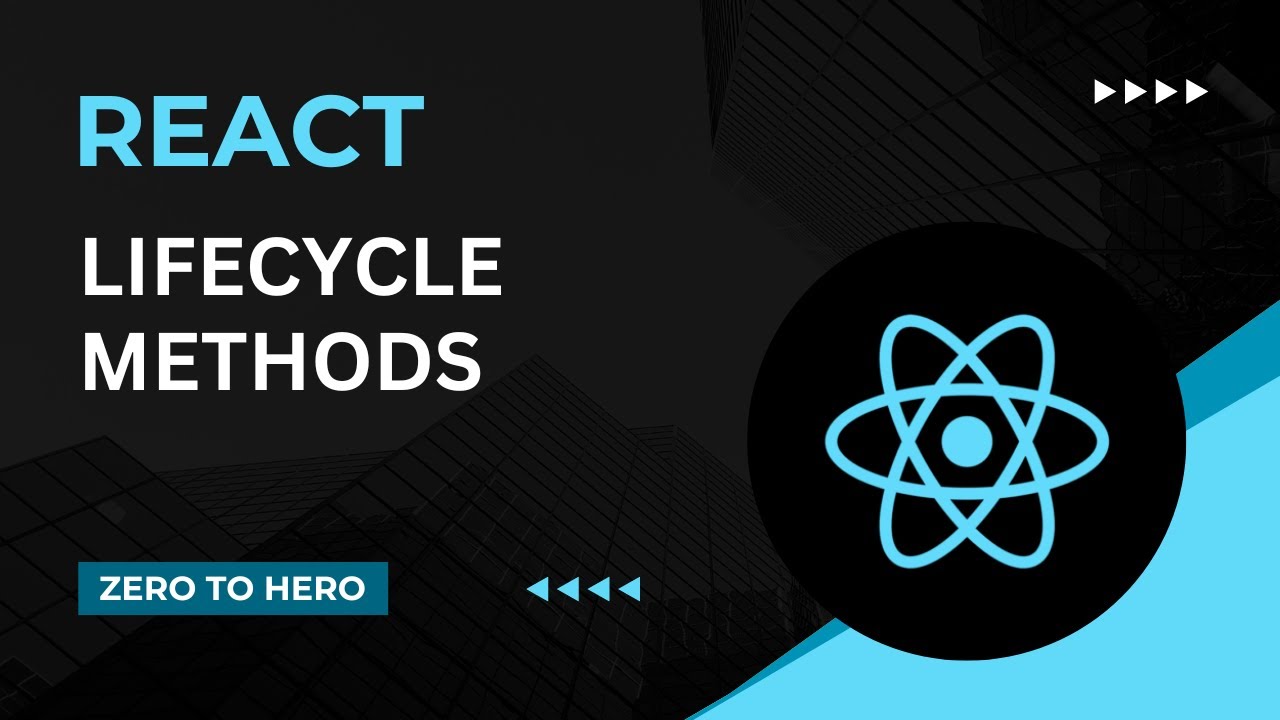useEffect Hook | Mastering React: An In-Depth Zero to Hero Video Series
Summary
TLDRIn this video from the React JS - Zero to Hero series, the useEffect hook in React is explained in detail. The host demonstrates how to replicate the component lifecycle methods from class components, such as componentDidMount, componentDidUpdate, and componentWillUnmount, using useEffect in functional components. The video covers the useEffect hook's ability to manage side effects like fetching data, handling dependencies, and cleaning up with return functions. Practical examples help users understand when and how to use useEffect effectively. Viewers are encouraged to like, subscribe, and stay tuned for future content.
Takeaways
- 🧑🏫 This video is part of the 'React JS - Zero to Hero' series aimed at beginners learning React JS from scratch.
- 🔄 The useEffect hook is introduced as a way to perform side effects in functional components, which were previously managed by lifecycle methods in class components.
- 🌀 Side effects in React are operations that involve reaching outside of the React component, such as API requests or interacting with browser APIs.
- 📚 The useEffect hook can replicate the behavior of componentDidMount, componentDidUpdate, and componentWillUnmount from class components.
- 🔑 The useEffect hook takes two arguments: a function containing the side effect and an optional dependency array to control when the effect runs.
- 🚫 Without a dependency array, the side effect will run after every render, which is often not desired.
- 🔄 By adding dependencies to the array, useEffect can be made to run only when those dependencies change, similar to componentDidUpdate.
- 📈 The script demonstrates how to fetch data from a backend when a component mounts and how to control this behavior with useEffect.
- ⏰ The useEffect hook is also used to handle timing functions like setInterval, and it shows how to clean up the interval when a component unmounts.
- 🛠️ The video provides a practical example of using useEffect with a child component that updates a state every second, and how to properly clean up the interval on unmount.
- 👍 The presenter encourages viewers to like, subscribe, and support the channel for more educational content on React JS.
Q & A
What is the purpose of the useEffect hook in React?
-The useEffect hook in React is used to perform side effects in functional components, such as making API requests, interacting with browser APIs, or using timing functions like setTimeout or setInterval.
What are side effects in the context of React components?
-Side effects in React are operations that involve reaching outside of the component's scope, such as API calls or interactions with the browser's APIs, which are not predictable and can affect the component's behavior.
How does the useEffect hook replicate the componentDidMount lifecycle method?
-The useEffect hook can replicate the componentDidMount lifecycle method by placing the API call or initialization code inside the useEffect function without a dependency array, which will run only once when the component mounts.
What is the role of the dependency array in the useEffect hook?
-The dependency array in the useEffect hook determines when the side effect should re-run. If the array is empty, the effect runs only once after the initial render. If it contains specific state or props, the effect will re-run when those dependencies change.
How can you prevent the useEffect hook from running on every render?
-To prevent the useEffect hook from running on every render, you can provide an empty dependency array. This ensures that the side effect only runs once after the initial render and not on subsequent re-renders.
How does the useEffect hook mimic the componentDidUpdate lifecycle method?
-The useEffect hook can mimic the componentDidUpdate lifecycle method by including state or props in the dependency array. This causes the side effect to run whenever the specified dependencies change, similar to componentDidUpdate.
What is the purpose of returning a function from the useEffect hook?
-Returning a function from the useEffect hook allows you to clean up side effects before the component unmounts or before the next effect runs. This is useful for canceling subscriptions or clearing intervals.
How can you replicate the componentWillUnmount lifecycle method using useEffect?
-You can replicate the componentWillUnmount lifecycle method by returning a cleanup function from the useEffect hook. This function is executed when the component is about to unmount or before the next effect runs, allowing you to stop intervals or cancel subscriptions.
Why is it important to be careful with the dependency array in useEffect?
-It is important to be careful with the dependency array in useEffect because including state or props that change frequently can lead to the side effect being called more often than necessary, which can cause performance issues or unexpected behavior.
What is the significance of the order of operations in the useEffect hook?
-The order of operations in the useEffect hook is significant because the cleanup function, if returned, is executed before the next effect runs or before the component unmounts. This ensures that any necessary cleanup is done in the correct sequence.
Outlines

هذا القسم متوفر فقط للمشتركين. يرجى الترقية للوصول إلى هذه الميزة.
قم بالترقية الآنMindmap

هذا القسم متوفر فقط للمشتركين. يرجى الترقية للوصول إلى هذه الميزة.
قم بالترقية الآنKeywords

هذا القسم متوفر فقط للمشتركين. يرجى الترقية للوصول إلى هذه الميزة.
قم بالترقية الآنHighlights

هذا القسم متوفر فقط للمشتركين. يرجى الترقية للوصول إلى هذه الميزة.
قم بالترقية الآنTranscripts

هذا القسم متوفر فقط للمشتركين. يرجى الترقية للوصول إلى هذه الميزة.
قم بالترقية الآنتصفح المزيد من مقاطع الفيديو ذات الصلة

Life Cycle Methods | Mastering React: An In-Depth Zero to Hero Video Series

Getting Started | Mastering React: An In-Depth Zero to Hero Video Series

Course Introduction | Mastering React: An In-Depth Zero to Hero Video Series

A First Look at Effects | Lecture 141 | React.JS 🔥

useEffect to the Rescue | Lecture 140 | React.JS 🔥

How React Works | Mastering React: An In-Depth Zero to Hero Video Series
5.0 / 5 (0 votes)
